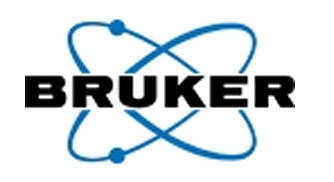布鲁克拓展MALDI Biotyper性能、方法和数据库,用于分枝杆菌和多核霉菌
Bruker Expands MALDI Biotyper Capabilities with New Protocols and Reference Libraries for Mycobacteria and Multicellular Fungi
At the 22nd ECCMID (European Congress of Clinical Microbiology and Infectious Diseases) in London, Bruker announces new protocols and reference libraries for mycobacteria and multicellular fungi to further extend the microbial coverage of the MALDI Biotyper system for MALDI-TOF mass spectrometry-based microbial identification. Both groups of microorganisms pose major problems to private and public health care systems. Nowadays, bacteria of the Mycobacterium tuberculosis complex, for example, are reported again in countries again where they were thought to be eradicated. Nontuberculosis mycobacteria can cause severe health problems, especially in immune-compromised and senior patients.

Prof. Hof from the Mycology Laboratory of Laboratory of Limbach in Heidelberg, Germany (Photo: Business Wire)
Previously, the identification of both groups of microorganisms has been a very demanding task in the routine microbiology laboratory. For mycobacteria, simple biochemical identification procedures are not available due to their high pathogenicity and their slow growth. Accordingly, secure inactivation protocols have to be employed first.
Classical fungi analysis, on the other hand, requires deep expert knowledge about morphology and molecular biology of the species. Especially microscopy-based identification is error-prone, as morphology might change with different growth conditions or fungal growth stages.
In recent years, the MALDI Biotyper has been proven to be a breakthrough microbiology identification tool compared to classical identification approaches, as it does not rely on any metabolic behaviour but on molecular proteomic signatures of the respective microbial species. With the new mycobacteria and fungi libraries this new paradigm was applied and validated carefully for two groups of microorganism, where conventional techniques were either error-prone, or expensive and difficult to implement in the laboratory.
Dr. Markus Kostrzewa, Vice President for Clinical Mass Spectrometry of Bruker Daltonics, pointed out: “For both groups, we had to establish reliable sample preparation methods first, before we started to build up the respective reference libraries in order to ensure the identification quality that our customers expect from the MALDI Biotyper. In both cases the cooperation with our multinational consortia of collaboration partners has proven to be an important success factor. For mycobacteria, we had to develop the combination of a secure inactivation protocol and subsequent reliable cell disruption, using a silica-bead protocol to disrupt the cell wall and extract the proteins. This ensures the generation of highest quality reference entries for almost one hundred otherwise difficult to measure mycobacterial species. This new MALDI Biotyper workflow is suitable for mycobacteria grown on solid media, e.g. Löwenstein-Jensen medium, or in liquid culture using the BD MGIT™ system. For fungi, the major challenge was to prevent sporulation, as different stages of sporulation may have an impact on the resulting proteomic profiles. Subsequently, we have built up the fungi library from very well characterized fungi collections from the laboratories of our fungi consortium.”
Microbiologist Prof. Dr. Dag Harmsen, Head of Research & Development at the Department of Periodontology, University of Muenster, Germany commented: “MALDI-TOF mass spectrometry has been shown to have major clinical impact by fast species identification with broad species coverage. However, the technology was not readily available for the very demanding analysis of mycobacteria. In the past years, I have been deeply involved in molecular characterization of mycobacteria, for example by means of sequencing approaches. I am glad to see that now with the new mycobacteria library of Bruker´s MALDI Biotyper, this further dimension of molecular characterization by a proteomic fingerprint is also available for mycobacteria.”
Prof. Hof from the Mycology Laboratory of Laboratory of Limbach in Heidelberg, Germany pointed out: “The identification of multicellular fungi to the species level is one of the most challenging tasks of many microbiological laboratories in medicine, hygiene as well as in the food industry. In cooperation with Bruker’s dedicated microbiology team we worked as part of an international group of fungi experts on the identification using the MALDI Biotyper approach. Based on Bruker’s development of the fungi sample preparation procedure, we contributed, established and validated a reference library of a large panel of the most important fungal strains. Our common efforts during the last years have shown that MALDI-TOF based molecular fingerprint of fungi provides a high differentiation power both at the species and the strain level. The analytical performance of the MALDI Biotyper when used with the fungi library is a major technological breakthrough and practical improvement when compared to more conventional approaches and technologies using microscopy and sequencing methods only.”
About the Bruker MALDI Biotyper
Bruker’s dedicated MALDI Biotyper solution (www.bdal.com/maldibiotyper) enables molecular identification, and taxonomical classification or dereplication of microorganisms like bacteria, yeasts and fungi. Classification and identification of microorganisms is achieved reliably and quickly using proteomic fingerprinting by high-throughput MALDI-TOF mass spectrometry. Applications include clinical routine microbial identification, environmental and pharmaceutical analysis, taxonomical research, food and consumer product safety and quality control, as well as marine microbiology. Bruker’s robust MALDI Biotyper method requires minimal sample preparation efforts and offers low consumables cost per sample. The MALDI Biotyper is available in a research-use-only version, as well as in an IVD-CE version according to EU directive EC/98/79 in various European countries.
ABOUT BRUKER CORPORATION (NASDAQ: BRKR)
Bruker is a leading provider of high-performance scientific instruments and solutions for molecular and materials research, as well as for industrial and applied analysis. For more information: www.bruker.com
Photos/Multimedia Gallery Available: http://www.businesswire.com/cgi-bin/mmg.cgi?eid=50224666&lang=en
Bruker Daltonics
Karin Hoffmann, +49-421-2205-2041
MALDI Biotyper Marketing
kho@bdal.de
厂家名称
布鲁克•道尔顿公司是由在纳斯达克上市(NASDAQ:BRKR)的布鲁克生物科技公司(Bruker BioSciences Corporation)控股经营的一个子公司,专门开发和提供基于质谱的创新性生命科学研究工具,是业界的领先...

